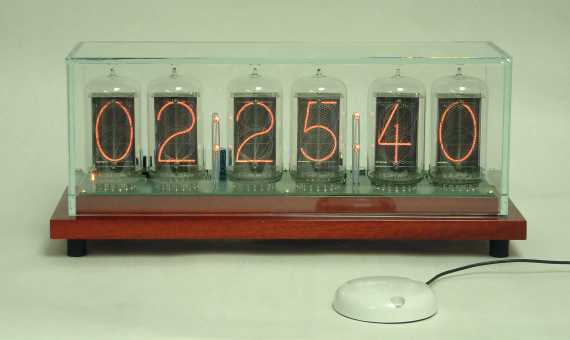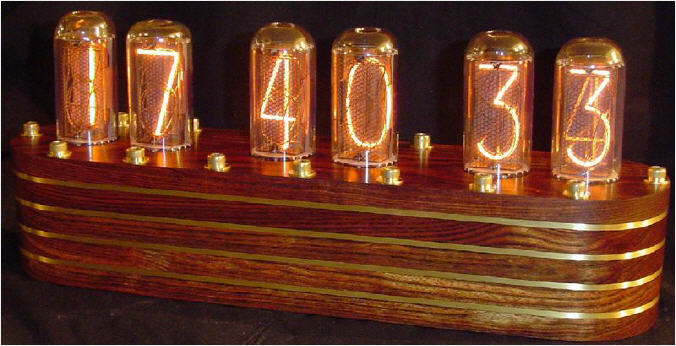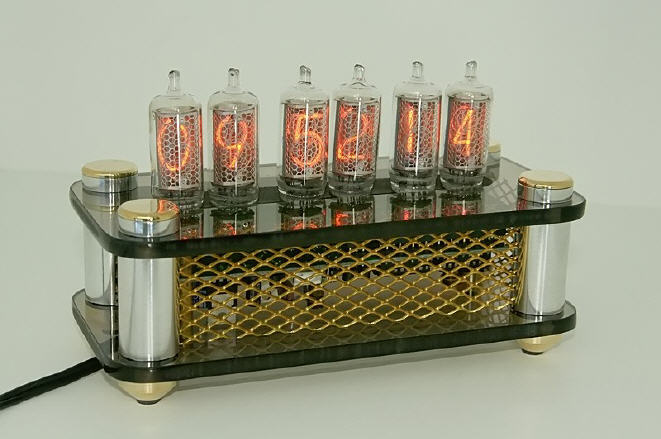Nixies
A design I really like, mentioned briefly elsewhere, is the 'nixie' tube. Designed in the 1950s the nixie was THE numerical indicator before LEDs, LCDs and fluorescent displays. Often used in test equipment, early calculators, and even some hi-fi from the likes of Revox; although once the LED was invented they disappeared and as original stocks from the 60's are used up it's unlikely we'll ever see them again.
At this point I suppose I should mention that it's really my friend Robin that is 'to blame' for me becoming a nixie nut. He saw a nixie clock in the San Francisco Museum of Modern Art, and on returning home bought one. It is a Karlsson clock with very small nixie tubes. We joke that I have a big clock and that he has timepiece envy.
The fascination with nixies is down to the appearance and history. Unlike the harsh light from an LED, a nixie tube has a warm orange glow. A Nixie's digits consist of ten thin metal electrodes that are individually formed and can easily incorporate curves. The only technical flaw is based on the fact that the digits are stacked in front of each other; this causes tiny gaps where they are shadowed by the digits in front of it; but that in turn does give a nixie a great animated quality.
Today nixie tubes are being used around the world in clocks of all kinds of design. In Germany for example there are people making nixie tube circuit boards to drive more readily available tubes. In the US Jeff Thomas designs a range of nixie clocks. One of his earlier clocks is based on a tube called a Z568M. It's quite a large tube by nixie standards and quite difficult to get hold of these days. It has a range of features including time, date, temperature and alarm; and as it is GPS enabled (!) it keeps excellent time and can even give you your latitude and longitude!

A number of people have built some really amazing clocks based around these tubes.

